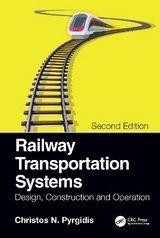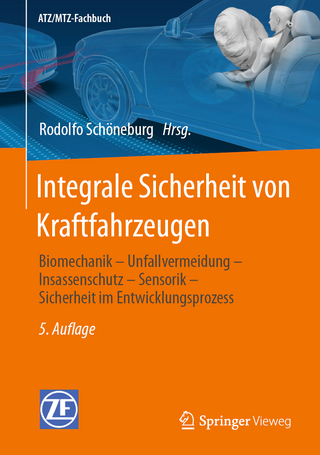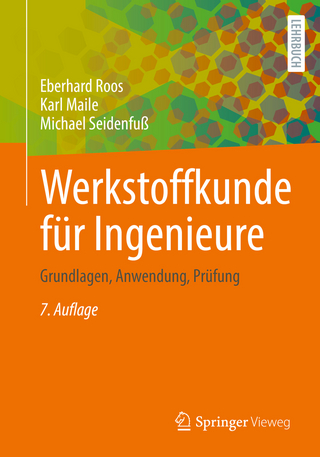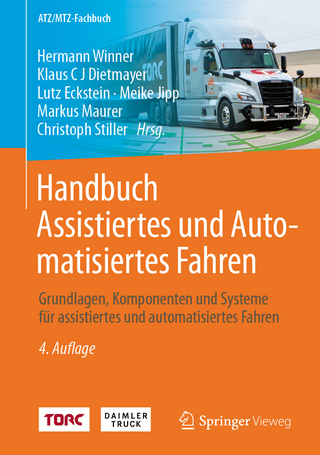
Railway Transportation Systems
CRC Press (Verlag)
978-0-367-02797-1 (ISBN)
- Titel erscheint in neuer Auflage
- Artikel merken
Railway Transportation Systems: Design, Construction and Operation presents a comprehensive overview of railway passenger and freight transport systems, from design through to construction and operation. It covers the range of railway passenger systems, from conventional and high speed inter-urban systems through to suburban, regional and urban ones. Moreover, it thoroughly covers freight railway systems transporting conventional loads, heavy loads and dangerous goods. For each system it provides a definition, a brief overview of its evolution and examples of good practice, the main design, construction and operational characteristics, the preconditions for its selection, and the steps required to check the feasibility of its implementation.
Developed for Engineers, Designers, and Operators of Railway Systems
The book also provides a general overview of issues related to safety, interface with the environment, cutting-edge technologies, and finally the techniques that govern the stability and guidance of railway vehicles on track.
Contains information on the three main constituents of all railway systems: railway infrastructure, rolling stock, railway operations
Provides a methodology for testing the applicability of the implementation of railway systems
Offers an overview of issues related to the safety of railway systems in general
Describes their interfaces with the environment, the cutting-edge technologies that are already in place as well as those that are under research, and the techniques that govern the stability and guidance of railway vehicles on track
Railway Transportation Systems: Design, Construction and Operation suits students, and also those in the industry — engineers, consultants, manufacturers, transport company executives — who need some breadth of knowledge to guide them over the course of their careers.
Christos N. Pyrgidis is a professor in railway engineering for the civil engineering department at Aristotle University of Thessaloniki (AUTh), Greece. He earned a diploma in civil engineering (AUTh, 1981). In addition, he specialized for five years at the Ecole Nationale des Ponts et Chaussées (ENPC) Paris, France, in transportation infrastructure (1984–1985: CES ‘Infrastructure et Transports’); transport economics (1985–1986: DEA ‘transport’) and railway engineering (1986–1989: PhD in ‘transport’). From 2004 to 2007 he was the Greek representative to the Administrative Board of the European Railway Agency (ERA). Pyrgidis is a member of the ERRAC Academia Permanent Advisory Group and member of the Scientific Committee of SHIFT2RAIL Joint Undertaking (S2R JU). He has published more than 100 articles in scientific journals and international congresses. He is the author of another book, which is entitled Railway Transportation Systems: Infrastructure, Rolling Stock, Exploitation (in Greek).
The Railway as a Transport System
Definition
Constituents
The Railway System Technique
Classification of Railway Systems
The Capabilities of the Railway System
Historical Overview of the Railway, and Future Perspectives
References
Loads on Track
Classification of Loads
Vertical Loads on Track
Transversal Loads on Track
Longitudinal Forces
References
Behavior of Rolling Stock on Track
Behavior of a Single Railway Wheelset
Behavior of a Whole Vehicle
Derailment of Railway Vehicles
References
Tramway
Definition and Description of the System
Classification of Tramway Systems
Constructional and Operational Characteristics of the System
Integration of Tramway Corridors across the Road Arteries
Integration of Stops
Tramway Depot Facilities
Requirements for Implementing the System
Applicability Verification of Alternative Alignments
Historical Overview and Present Situation
References
Metro
Definition and Description of the System
Classification of Metro Systems
Constructional and Operational Characteristics of a Metro System
Metro Stations
Depot Facilities
Requirements for Implementing the System
Historical Overview and Present Situation
References
Monorail
Definition and Description of the System
Classification of the Monorails and Techniques of the System
Constructional and Operational Characteristics of the System
Advantages and Disadvantages of Monorail Systems
Requirements for Implementing the System
Historical Overview and Present Situation
References
Automatic Passenger Transport Railway Systems of Low and Medium Transport Capacity
Definition
Cable-Propelled Railway Systems
Self-Propelled Electric Systems
References
Suburban Railway
Definition and Classification of Suburban Railway Systems
Constructional and Operational Characteristics of the System
Advantages and Disadvantages of the Suburban Railway
Requirements for Implementing the System
Applicability Verification of the System
References
Rack Railway
Definition and Description of the System
Classification of Rack Railway Systems
Evolution of the System and Application Examples
Constructional and Operational Features of Rack Railway Systems
Advantages and Disadvantages of Rack Railway Systems
Requirements for Implementing the System
References
Cable Railway Systems for Steep Gradients
Definition and Description of the System
The Funicular
The Inclined Elevator
Advantages and Disadvantages of Cable Railway Systems for Steep Gradients
Requirements for Implementing the System
References
Organisation and Management of Passenger Interurban Railway Transport
Services and Basic Design Principles
Service Level of Interurban Passenger Railway Transport: Quality Parameters
Scheduling of Passenger Train Services
Selection and Purchase of Rolling Stock
References
High-Speed Trains
Distinction between High Speeds and Conventional Speeds
High-Speed Train Issues
Specifications and Technical Solutions for the Achievement of High Speeds
Historical Review and Current Situation of High-Speed Networks and Trains
Interoperability Issues
References
Tilting Trains
Definition and Function Principle of Tilting Technology
Tilting Techniques and Systems
Main Constructional and Operational Characteristics of Tilting Trains
Requirements for Implementing the System
Historic Overview and Present Situation
References
Metric Track Gauge Interurban Railway Networks
Definition and Description of the System
General Overview of Metric Gauge Interurban Railway Networks
Main Constructional Characteristics of Interurban Metric Track Gauge Lines
Advantages and Disadvantages of Interurban Metric Gauge Lines
Requirements for Implementing the System
References
Organisation and Management of Freight Railway Transport
Services and Cargo Movement
Service Level of Freight Railway Transport: Quality Parameters
Scheduling of Freight Train Services
Combined Transport
Mass Transport
Transportation of Dangerous Goods
References
Heavy Haul Rail Transport
Definition and General Description of the System
The International Market in Heavy Haul Rail Transport
Differences between Conventional and Heavy Haul Freight Railway Networks
Impacts of Heavy Haul Rail Operations and Main Design Principles
Economic Efficiency of Heavy Haul Rail Transport
References
Impact of Traffic Composition on the Economic Profitability of a Railway System
Traffic Composition and Classification of Railway Networks/Corridors
Economic Profitability and Classification of Railway Networks/Corridors
The Problem of Mixed Traffic Operation
Investigation of the Impact of Traffic Composition on the Economic Profitability of a Railway System
References
Railway Safety
Types of Railway Incidents and Definition of Railway Safety
Significance of Safety in Railway Systems and Differences in Road Safety
Classification of Railway Incidents
Causes of Railway Incidents
Safety in Civil Engineering Structures
Safety at Railway Stations
Safety on the ‘Open’ Track
Safety at RLCs
Correlation between the Cost of Interventions and the Safety Level Improvement
References
Railway and the Natural Environment
Natural Environment of the Railway
Energy Consumption
Air Pollution
Soil and Water Pollution
Visual Annoyance
Integration of the Track into the Landscape
Ecosystem Disturbance
Disturbance of Local Resident Activities: Access Restriction and Disruption of Urban Space
Acoustic Annoyance
Ground-Borne Noise and Vibrations
Impacts on Land Use
Comparative Assessment of the Impacts of Various Means of Transport to the Natural Environment
References
Cutting-Edge Technologies in Railways
Definition and Classification of Cutting-Edge Technologies
Smart Windows
Carbon and Glass Fibres
Laser Railhead Cleaner System
Catenary-Free Power Supply of Tramway Systems
References
| Erscheinungsdatum | 13.12.2018 |
|---|---|
| Zusatzinfo | 138 Tables, black and white; 272 Illustrations, black and white |
| Verlagsort | London |
| Sprache | englisch |
| Maße | 178 x 254 mm |
| Gewicht | 885 g |
| Themenwelt | Technik ► Fahrzeugbau / Schiffbau |
| Technik ► Maschinenbau | |
| ISBN-10 | 0-367-02797-6 / 0367027976 |
| ISBN-13 | 978-0-367-02797-1 / 9780367027971 |
| Zustand | Neuware |
| Informationen gemäß Produktsicherheitsverordnung (GPSR) | |
| Haben Sie eine Frage zum Produkt? |
aus dem Bereich



